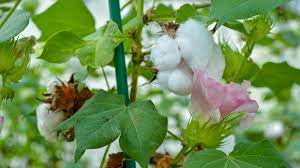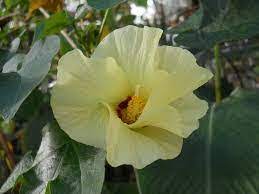The Almond Leaves: Economic Importance, Uses, and By-Products
Almond leaves are the leaves of the almond tree, scientifically known as Prunus dulcis. These trees are native to the Middle East and South Asia and have been cultivated for their nuts and oil for centuries. The leaves of the almond tree have also been traditionally used for medicinal purposes in many cultures. In this article, we will explore the scientific description of almond leaves.
Almond leaves are oval-shaped and have a pointed tip. They are about 3 to 5 inches long and 2 to 3 inches wide. The leaves are arranged alternately on the branches of the tree. They are dark green in color and have a smooth texture on the upper surface. The lower surface of the leaves is slightly fuzzy. The leaves have serrated margins, which means they have sharp teeth-like edges.
Almond leaves contain several phytochemicals, including flavonoids, tannins, and phenolic acids. These compounds have been found to have antioxidant, anti-inflammatory, and antimicrobial properties. Almond leaves also contain essential oils, which give them their distinct aroma.
In traditional medicine, almond leaves have been used to treat various ailments. They have been used as a mild sedative, a diuretic, and a laxative. Almond leaves have also been used to treat respiratory infections, fever, and skin conditions like eczema and psoriasis. Additionally, almond leaves have been used to help regulate blood sugar levels and improve digestion.
Recent studies have shown that almond leaves may have potential therapeutic effects. One study found that a compound isolated from almond leaves had antitumor activity against breast cancer cells. Another study found that an extract of almond leaves had antimicrobial activity against several strains of bacteria and fungi.
Additionally, almond leaves have been found to have anti-inflammatory effects and may be helpful in managing conditions like arthritis.
In conclusion, almond leaves are the leaves of the almond tree and have been traditionally used for medicinal purposes. They contain several phytochemicals with potential therapeutic effects.
While more research is needed to fully understand the medicinal properties of almond leaves, they have been shown to have antioxidant, anti-inflammatory, and antimicrobial effects. If you are considering using almond leaves for medicinal purposes, it is important to consult with a healthcare professional first.
The Economic Importance and Uses of Almond Leaves

Almond leaves are the leaves of the almond tree, commonly known as Prunus dulcis. These leaves have been used for various purposes for centuries. They have many economic and medicinal benefits, which have made them popular in different parts of the world. Here are 18 economic importance and uses of almond leaves:
1. Traditional medicine: In traditional medicine, almond leaves have been used to treat various ailments such as respiratory problems, sore throat, and fever.
2. Skincare: Almond leaves are rich in antioxidants, which make them useful in skincare products. They help to combat free radicals, which can cause skin damage and aging.
3. Tea: Almond leaves can be used to make tea, which has a pleasant, nutty flavor. This tea is rich in antioxidants and can provide various health benefits.
4. Food flavoring: Almond leaves can be used as a flavoring agent in food. They are commonly used in Indian and Middle Eastern cuisine to add a nutty flavor to curries and stews.
5. Tanning agent: Almond leaves are rich in tannins, which make them useful as a natural tanning agent. They can be used to tan animal hides and make leather products.
6. Natural dye: Almond leaves can be used to make a natural dye. The leaves are boiled in water, and the resulting liquid can be used to dye fabrics and other materials.
7. Insecticide: Almond leaves contain compounds that are toxic to insects. They can be used as a natural insecticide to control pests in gardens and farms.
8. Fodder: Almond leaves can be used as a fodder for livestock. They are rich in protein and other nutrients that can help to improve the health and productivity of animals.
9. Fuel: Almond leaves can be dried and used as a fuel for cooking and heating. They burn slowly and produce a lot of heat, making them an efficient fuel source.
10. Soil conditioner: Almond leaves can be used as a soil conditioner. They are rich in nutrients that can help to improve soil fertility and structure.
11. Papermaking: Almond leaves can be used to make paper. The leaves are boiled and beaten to form a pulp, which can be used to make paper products.
12. Cosmetics: Almond leaves can be used in cosmetics products such as soaps, shampoos, and lotions. They have moisturizing properties that can help to keep the skin and hair hydrated.
13. Aromatherapy: Almond leaves can be used in aromatherapy. They have a pleasant, nutty aroma that can help to promote relaxation and reduce stress.
14. Medicinal oil: Almond leaves can be used to make medicinal oil. The oil is extracted from the leaves and can be used to treat various ailments such as skin infections, wounds, and arthritis.
15. Natural fertilizer: Almond leaves can be used as a natural fertilizer. They are rich in nitrogen, phosphorus, and other nutrients that can help to improve soil fertility.
16. Herbal remedy: Almond leaves can be used as a herbal remedy for various ailments such as coughs, colds, and digestive problems.
17. Insect repellent: Almond leaves can be used as an insect repellent. They contain compounds that are toxic to mosquitoes and other insects.
18. Soapmaking: Almond leaves can be used to make soap. The leaves are boiled and mixed with other ingredients to make a soap that is gentle on the skin.
Read Also: Sudangrass (Sorghum × drummondii) Complete Guide
The Products and By-products That Can Be Derived From Almond Leaves

Almond leaves can be used to produce various products and by-products. Here are 17 examples of the products and by-products that can be derived from almond leaves:
1. Almond leaf extract: Almond leaves can be used to make an extract, which can be used in various products such as skincare products and herbal remedies.
2. Almond leaf tea: Almond leaves can be used to make tea, which can be sold as a health drink.
3. Almond leaf powder: Almond leaves can be dried and ground into a fine powder, which can be used in various products such as skincare products and herbal remedies.
4. Almond leaf oil: Almond leaves can be used to make oil, which can be used in various products such as skincare products and herbal remedies.
5. Almond leaf soap: Almond leaves can be used to make soap, which is gentle on the skin and has moisturizing properties.
6. Almond leaf shampoo: Almond leaves can be used to make shampoo, which can help to keep the hair and scalp healthy.
7. Almond leaf lotion: Almond leaves can be used to make lotion, which can help to keep the skin hydrated and healthy.
8. Almond leaf cream: Almond leaves can be used to make cream, which can help to soothe and moisturize dry skin.
9. Almond leaf capsules: Almond leaves can be dried and ground into a fine powder, which can be encapsulated and sold as a dietary supplement.
10. Almond leaf tincture: Almond leaves can be used to make a tincture, which can be used as a herbal remedy for various ailments.
11. Almond leaf ointment: Almond leaves can be used to make an ointment, which can be used to treat skin conditions such as eczema and psoriasis.
12. Almond leaf salve: Almond leaves can be used to make a salve, which can be used to treat cuts, bruises, and other skin injuries.
13. Almond leaf balm: Almond leaves can be used to make a balm, which can be used to soothe and moisturize dry skin.
14. Almond leaf toner: Almond leaves can be used to make a toner, which can help to refresh and hydrate the skin.
15. Almond leaf face mask: Almond leaves can be used to make a face mask, which can help to cleanse and hydrate the skin.
16. Almond leaf body scrub: Almond leaves can be used to make a body scrub, which can help to exfoliate and moisturize the skin.
17. Almond leaf lip balm: Almond leaves can be used to make a lip balm, which can help to soothe and moisturize dry lips.
Read Also: 10 Medicinal Health Benefits Of Capsicum Annuum (Paprika)
Frequently Asked Questions (FAQ’s) About Almond Leaves

Here are 10 frequently asked questions about almond leaves:
1. Are almond leaves safe for consumption?
Yes, almond leaves are safe for consumption. They are commonly used to make tea, which is a popular health drink in many parts of the world.
2. Can almond leaves be used to treat respiratory problems?
Yes, almond leaves have been traditionally used to treat respiratory problems such as coughs and sore throat.
3. Are almond leaves safe for animals to consume?
Yes, almond leaves are safe for animals to consume. They can be used as a fodder for livestock.
4. Can almond leaves be used to make natural dyes?
Yes, almond leaves can be used to make a natural dye. The resulting color is a yellowish-brown hue.
5. Can almond leaves be used as a natural insecticide?
Yes, almond leaves contain compounds that are toxic to insects. They can be used as a natural insecticide to control pests in gardens and farms.
6. Can almond leaves be used to make paper?
Yes, almond leaves can be used to make paper. The resulting paper is thin and has a light brown color.
7. Can almond leaves be used in cosmetics?
Yes, almond leaves can be used in cosmetics products such as soaps, shampoos, and lotions. They have moisturizing properties that can help to keep the skin and hair hydrated.
8. Are there any side effects of using almond leaves?
No, there are no known side effects of using almond leaves. However, it is always recommended to consult a healthcare professional before using any herbal remedies.
9. Can almond leaves be used to make natural fertilizers?
Yes, almond leaves can be used as a natural fertilizer. They are rich in nitrogen, phosphorus, and other nutrients that can help to improve soil fertility.
10. Can almond leaves be used to make natural skincare products?
Yes, almond leaves can be used to make natural skincare products such as soaps, shampoos, and lotions. They have moisturizing properties that can help to keep the skin and hair hydrated.
Read Also: Landfill Emissions and their Impact on the Environment









